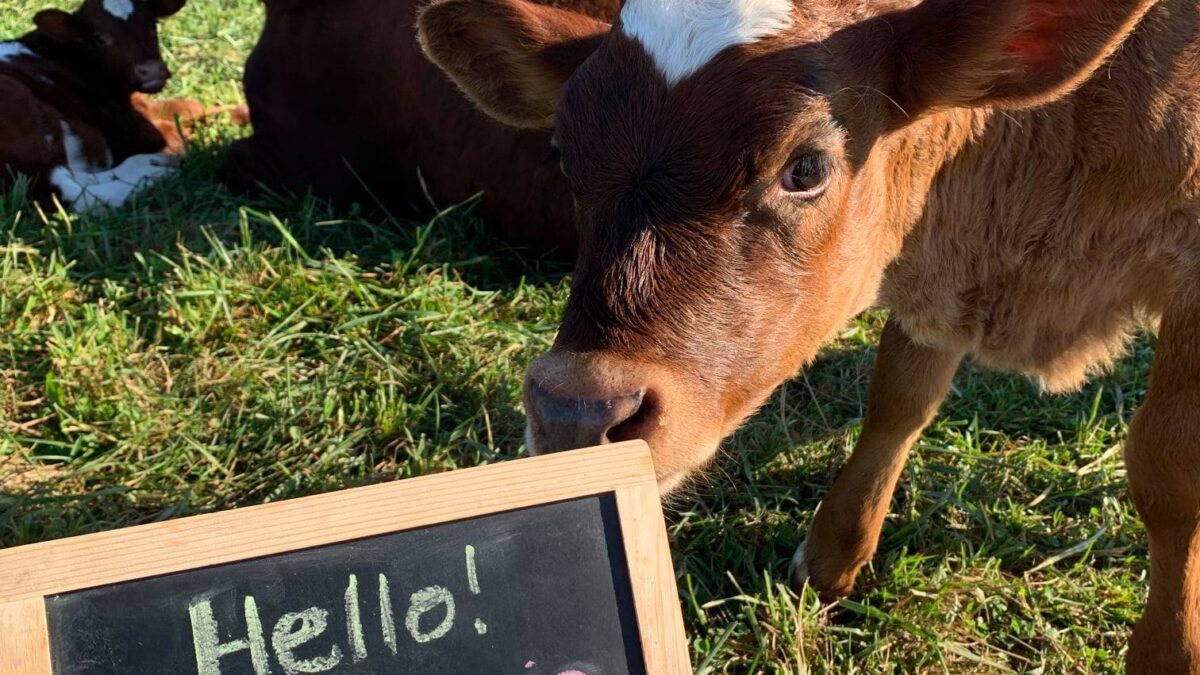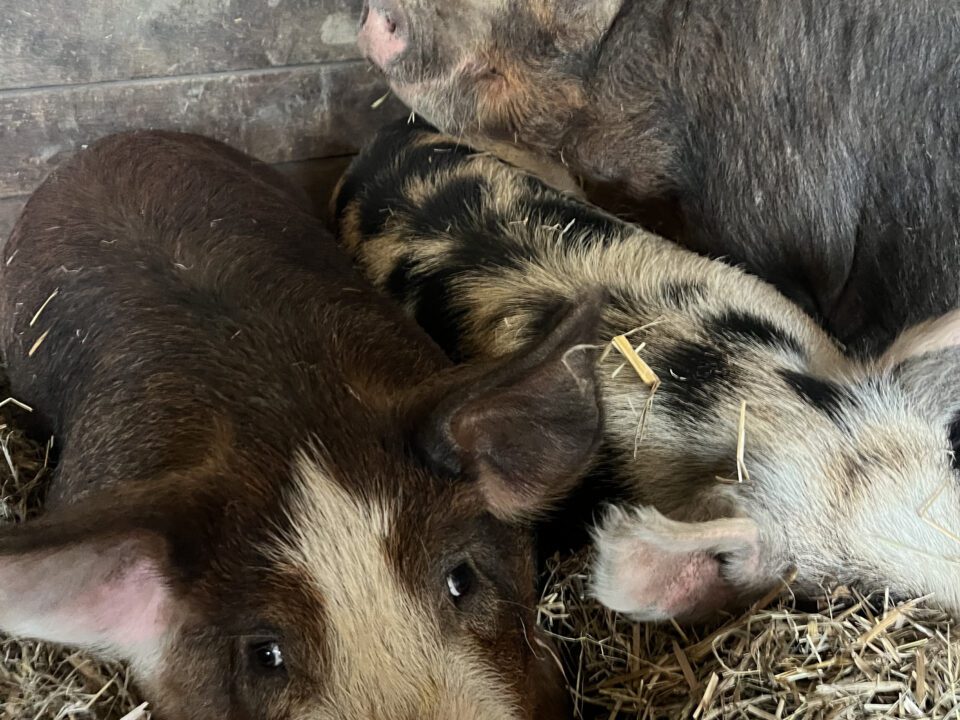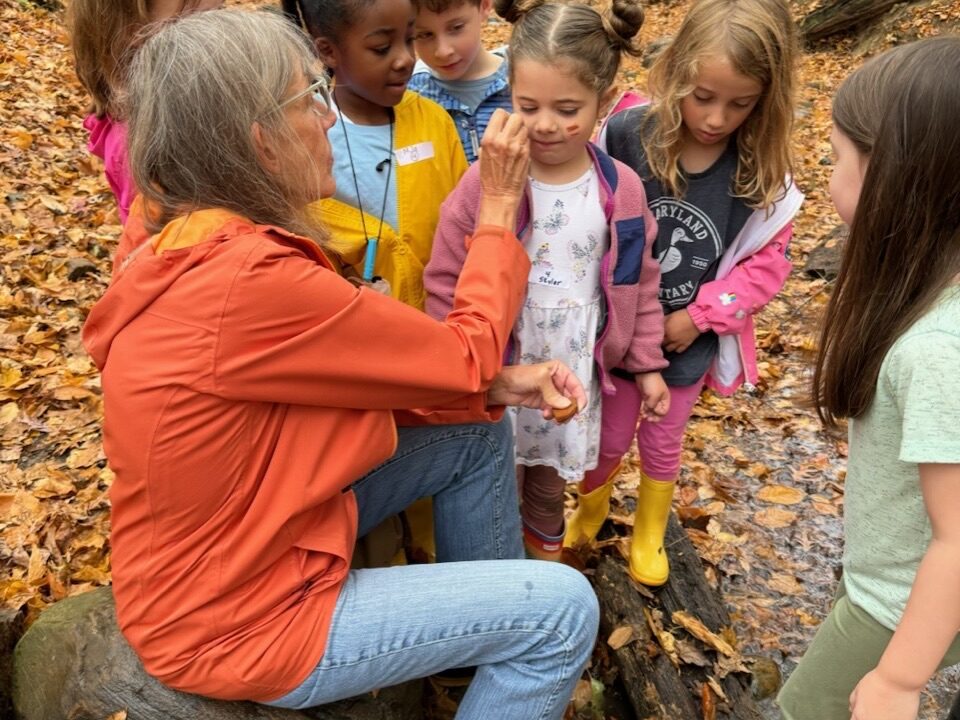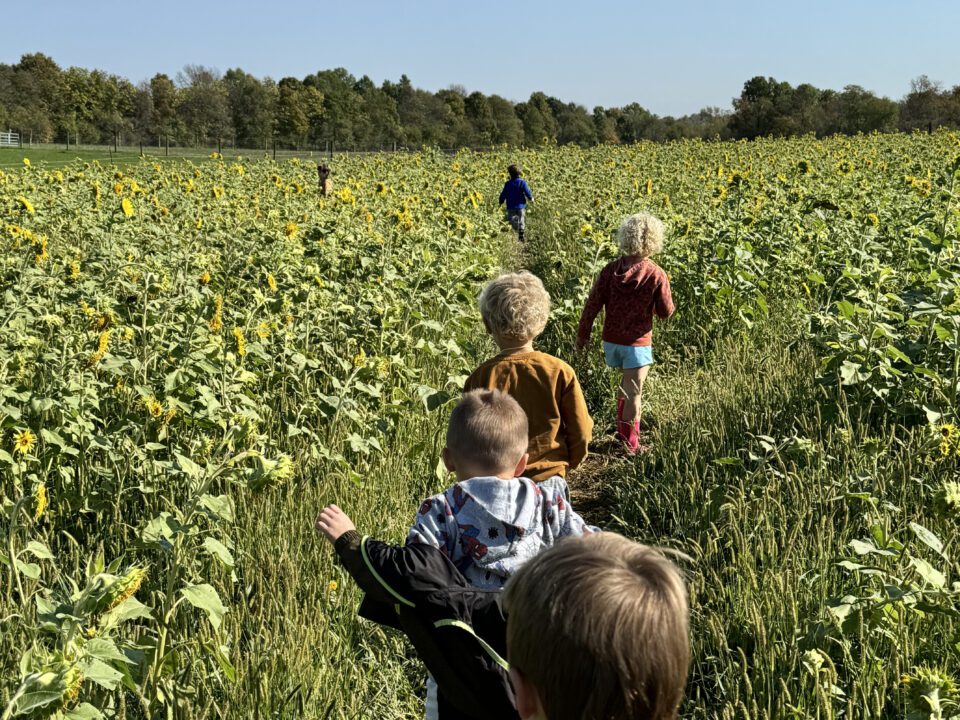
Hay Baler Hickups at Stratford Ecological Center
July 15, 2021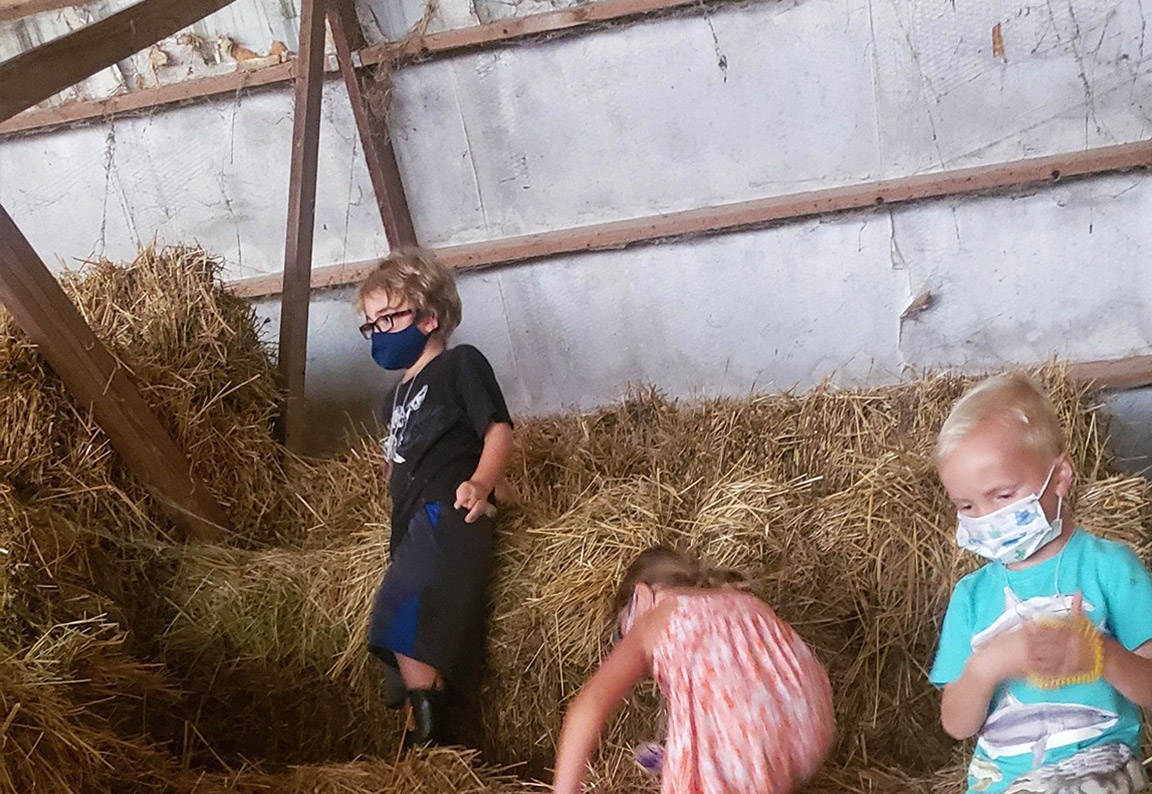
Life Moves Into High Gear At Stratford Ecological Center
September 15, 2021A welcome two inches of rain fell heavily at Stratford Ecological Center on Liberty Road on July 29, with ongoing showers through August 20. Areas to the north and south of us have not been so fortunate and experienced only a few drops. We squeaked in and harvested 326 bales from fields 8 & 9 the day before the downpour, and a further 446 bales on August 8. Ninety bales which did not meet the high standard required for horse hay were donated to us last week. Conditions look good for a final hay harvest at the end of August. This year has proved an excellent growing season for all crops, following a worrisome three years of too much rain or drought at a crucial growing stage.
The Buckwheat in the center of field 3 provided a vivid show of white flowers at the end of July. Its nectar will guarantee more honey to harvest, after an already record-breaking year. This month has seen some lodging of the buckwheat, when the tall stalks fell over due to the wind and rain, but still okay to cut for hay. After cutting, the ground will be lightly cultivated, and any fallen seed will germinate to provide more hay or be chopped back to become a wonderful soil amendment.
The squash was harvested in field 2. The area was cultivated and replanted with beans after the earlier crop failed, as well as sunflowers and more buckwheat. Everyone loves the sight and walking between the sunflowers, and their blooms will coincide with the fall school visits and farm school.
The field corn is tasseling on top of the plants in fields 3, 5 & 6. The pollen from the tassels is blown by the wind down onto the silks of the cob, or the occasional two cobs per stalk. A six-foot corn stalk is mainly made up of leaves, and much research has been carried out to utilize the biomass after the cobs are harvested. Each silk leads to and fertilizes a single kernel on the cob, enabling it to grow. along with approximately 800 siblings, to fill the cob.
The Prairie has responded exceptionally well to the burn earlier this year and to the weather. No longer are invasives competing with the sprouted flowers and grasses. Paths crisscross the area with different flowers thriving between them, along with the tall grass, Big Bluestem, which looks exactly like its common name Turkeyfoot.
Farmer Jeff decided to keep and fatten all eight of Frances’ piglets, rather than send a couple back to be raised by her breeder in New Philadelphia, Ohio. In mid-September Frances will return for a “re-fill” and come back to us to farrow. Meanwhile, she and the chunky colorful piglets, who look like little puppies from a distance, are rooting around in the thick grass in the barn yard. They exit their pen through a low opening with a door and return when they feel the need for shade.
The portable chicken coop is out in the North Pasture and occupied by the young hens from the Paw Paw coop. The house is equipped with an automatic closure on a timer, using a rechargeable battery powered by a solar panel. The Paw Paw coop is now home to five chicks born on July 21, the result of an incubation test with our eggs at the Delaware County Fairgrounds. We will supply another five dozen eggs so visitors can observe the birth of chicks during the Fair in September.
A brown bull calf was born in the S. Pasture on July 30. His mother is from our “Sassy” line of Jersey cows who were mated with a Red Devon or a Hereford bull. The calf has developed a sore on its side from a blow fly. This has been one of the worst years for flies. Perhaps this is due to the mild winter, or the fact that for the second year in a row we have not released native parasites to control the flies. Dairy farmers are convinced this practice works. They put out more and more each year and they propagate in the manure.
Our Holstein steer weighed in at the organic processor the second week of July at 1,045 lbs. The meat is now available. In order to ensure availability, the dates for processing our lambs, goats, hogs and cattle in 2021 and 2022 have already been scheduled.
The weekly farmhands stay busy. Last week Alex designed a new way of pulling the weed out of the pond. He uses a wooden bar with a chain attached at each end hooked on to the flat boat, to pull the weed to the edge where it is raked on shore. The rest of the weed crew maintain that their method of cutting the weed with a knife bar and hauling it to the shore in the canoe works better. The contest continues!
The last week of farm camp ended on August 13 after an extremely humid week for 3-5 years old. It did not faze them. The next few weeks will be busy with preparations for the fall guide training, school tours, farm school, and our Messages from the Earth science program.
Opportunities are now available to visit Stratford on Thursdays, as well as Saturday mornings. The bee program Meet the Pollinators continues for two sessions on Saturday, September 18. A Free-Range Run for all ages is planned for Saturday, September 25. For details and registration for any of the above please visit our web site. Enjoy the remaining days of summer.
Pauline Scott is a farm and nature guide at Stratford Ecological Center, 3083 Liberty Road, Delaware. She can be reached at 740 363 2548 or by email at info@stratfordecologicalcenter.org Stratford’s website is www.StratfordEcologicalCenter.org


